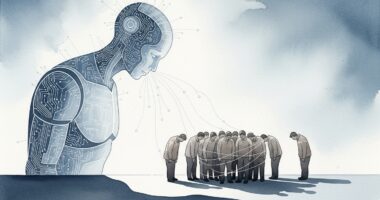Generative AI might be able to create stunning visual spectacles, but it still struggles with basic linguistic tests, such as understanding what “not” means.
A new study from the University of Liège reveals that while platforms like Midjourney and DALL-E can produce “aesthetic feats,” they frequently commit “beginner’s mistakes” when tasked with simple logical instructions.
The interdisciplinary research found that these systems struggle fundamentally with negation and temporal sequences. When asked to generate “a dog without a tail,” the AI typically produces a dog with a tail or hides the rear of the animal behind a frame, failing to comprehend the linguistic concept of absence.
“Our approach is based on a series of rigorous tests,” said Maria Giulia Dondero, semiotician at the University of Liège. “We submitted very specific requests to these two AI systems and analysed the images produced according to criteria from the humanities, such as the arrangement of shapes, colours, gazes, the specific dynamism of the still image, the rhythm of its deployment, etc.”
Beauty over brains
The study highlights a significant gap between visual polish and semantic understanding. The AI models frequently translated simple actions, such as “fighting,” into dance scenes and failed to distinguish between temporal states, like “starting to eat” versus “having finished eating.”
The researchers validated these findings through replication, generating up to 50 images per prompt to demonstrate that the errors were statistical patterns rather than one-off glitches.
They found distinct “personalities” in the failures: Midjourney favours “aestheticised” renderings that often ignore strict instructions in favour of visually appealing textures, while DALL-E offers better compositional control but varies widely in object orientation.
“AI tools are not simply automatic tools,” said Enzo D’Armenio, the article’s lead author and a junior professor at the University of Lorraine. “They translate our words according to their own logic, influenced by their databases and algorithms.”










